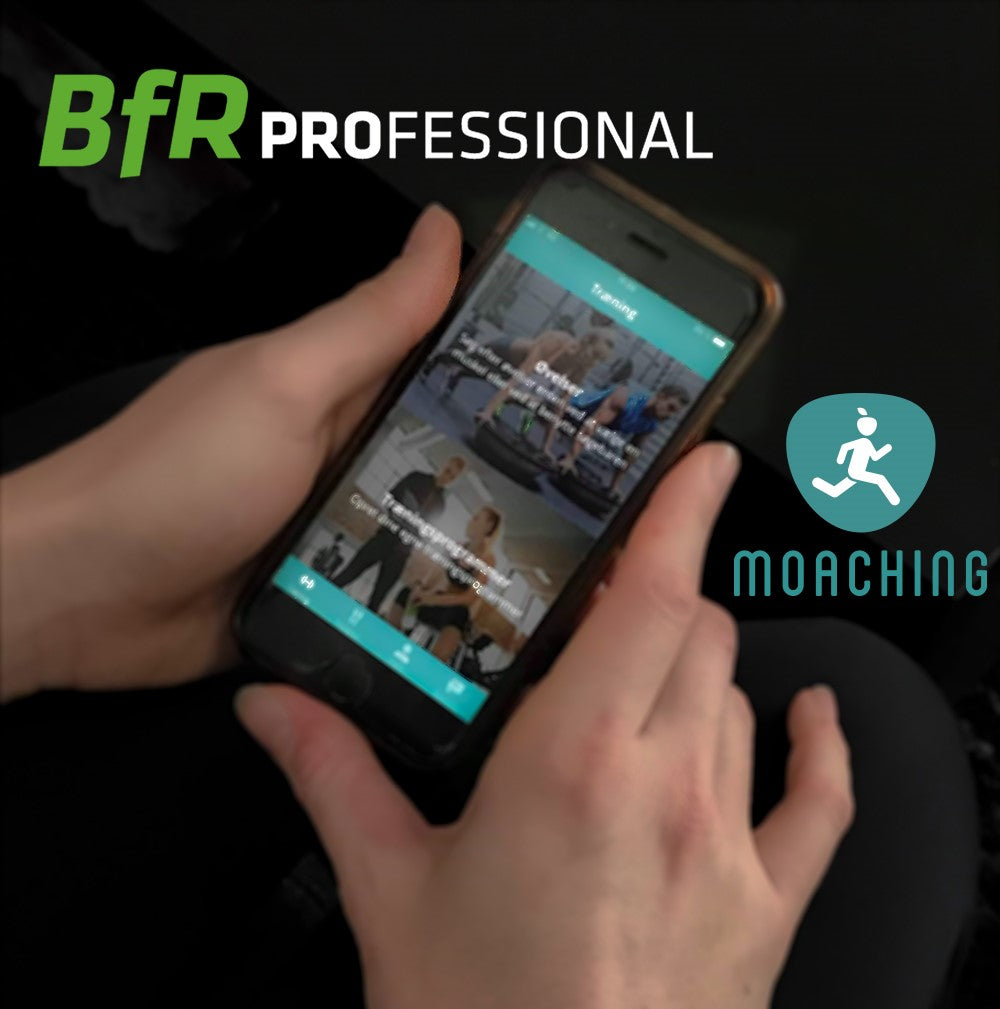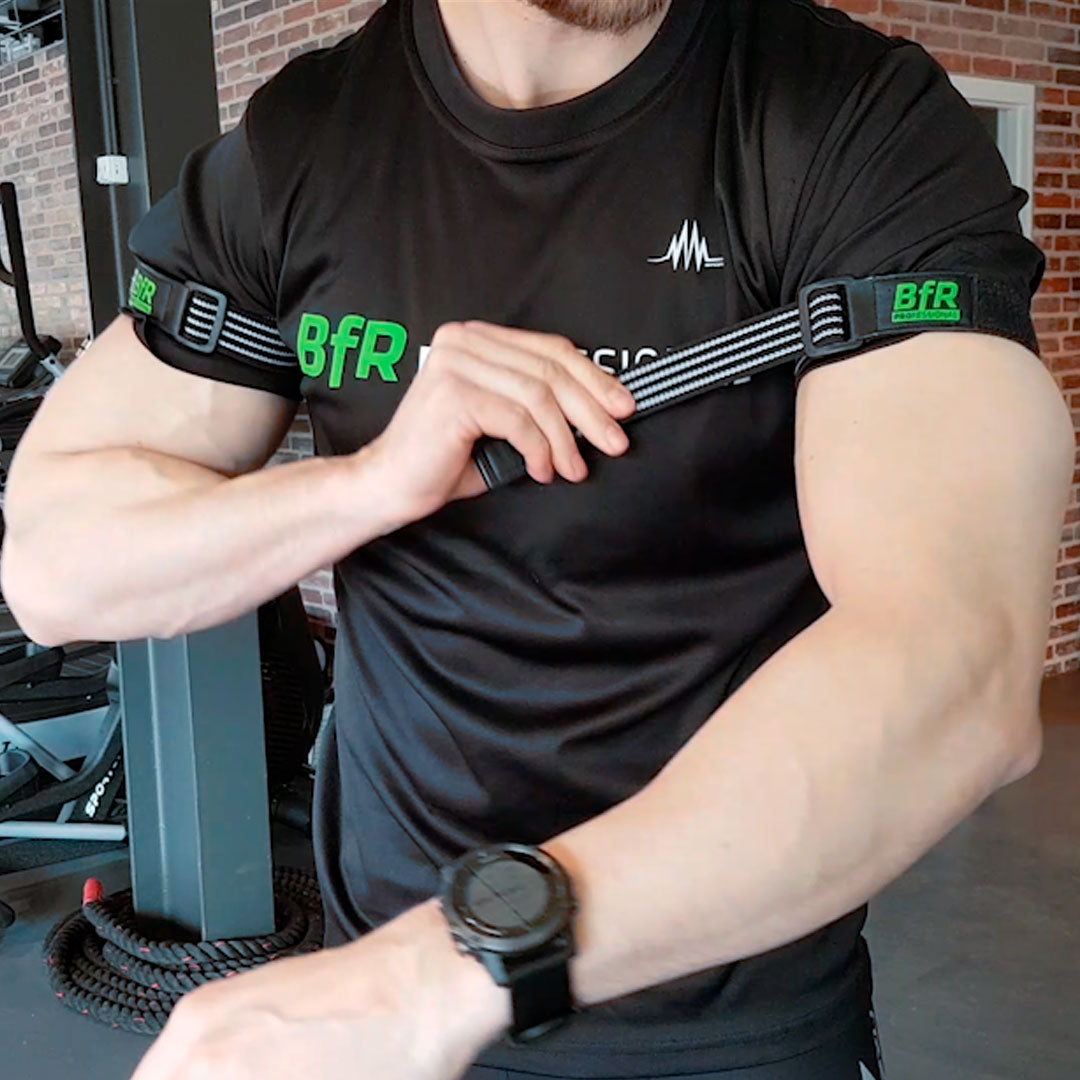
Why You Should Buy a Premium Product for Occlusion/ BFR Training
Since we launched BfR Professional using the world’s largest crowdfunding platform called Kickstarter to distribute our premium product for blood flow restriction (BFR)/occlusion/KAATSU training, we’ve been asked quite a few times why you can’t just use a rope or regular elastic band when performing this new training hack?
Of course, it all comes down to preferences, but we've tried a lot of different alternatives ourselves over the past two years, and the conclusion is that the design and comfort of the strap/band/cuff absolutely matter! In fact, our British BfR Pro Ambassador and guest blogger James Ruckley has been through the same trying to find the perfect occlusion straps; read more about his experience here).
Below are some of the things we have taken into consideration as we designed the BfR Pro ARMS for ourselves and you…
Different sizes
As BFR training becomes increasingly popular within fitness and for rehabilitation, more products will naturally hit the market, but the quality of them already varies greatly. Most of the current products come with a “one-size fits all” mentality, which may be just fine for you. Indeed, our own BfR Pro LEGS is a one-size product as this made sense to us in the case of leg training.
However, we decided to focus on offering a customised arms product in different sizes to match the needs of the individual, and this is how our top teller BfR Pro ARMS came to be. This makes it not only more comfortable to wear but also a lot nicer to look at from an aesthetic point of view without half of the band flapping around your arm as you work out. (If you're as vain as we are from time to time, you'll surely appreciate this!).
Finding the right size for you
Our website has a size guide as well as instructions on how to measure your upper arm correctly in order to pick the right strap size. In short, you should measure the area below your shoulder but above your biceps and triceps – not the area around the middle of your biceps where the circumference is naturally larger.
You may ask, “I’m between two different sizes, so which one should I choose?” We always recommend going for the larger one since it's better to apply a lower pressure than too hard of a pressure which can have a negative effect on your muscle-building and in worst cases cause an injury. Another advantage is that picking the larger of the two will allow you to grow - and believe us, you will!
Single-handed fitting
One of the major challenges using knee wraps or other one-size occlusion bands can be to strap it on in the first place without the assistance of a buddy since this kind of product is typically long and unhandy.
And although you may be the type of person who welcomes any opportunity to interact with your fellow gym-goers, these makeshift bands may often also cause an uneven pressure to be applied to the muscle which may decrease the actual physiological effect of your training.
We solved this by designing a product that you can strap on and release with one hand making it even more simple to use leaving you to focus on finding and applying the right pressure for you.
In doubt about how to find the correct pressure? Read this post with 4 easy tips that will enable you to take your workout to the next level.
Anti-slip technology: Don't worry, we got you
The white anti-slip stripes embedded in the specialised elastic band support the single-handed fitting as they grab on to your skin once you tighten the strap around your arm.
The anti-slip technology eases the use of this new and intelligent training method considerably. After all, BFR training should propel your workout forward and challenge you to break free of your routine - not be the cause of frustration because you can't even strap on the product to begin with.
Width; wider is not always better
Unlike most other products available for occlusion training on your upper body, we decided to create our strap with a width of 3 cm. According to the latest scientific research done on the practical application of BFR training, it's recommended that the straps used on your upper body extremities (meaning your arms) should be between 3-5 cm wide.
After hours of testing prototypes ourselves in the gym and outside doing functional training, we found that applying a wider strap was less comfortable and often annoying, especially to your biceps during sets.
Lastly, to see our BfR Pro ARMS straps in action, check out our 3 min Kickstarter campaign video here.
We hope you find this an inspiring read! If you've got any questions, don't hesitate to hit us up via e-mail at contact@bfrpro.com or on Facebook.
All the best,
Team BfR Professional








